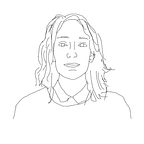Ironhack Challenge 1 : Citymapper
Prework UX/UI Bootcamp — Paris
This is my first Medium article and I’m presenting my findings for the first Challenge of the Prework, applying Design Thinking process.
We were asking to propose a new feature for a transport app that solves the pain of having to purchase different public transport tickets by different channels.
The app is Citymapper.
Citymapper is a public transit app and mapping service. It integrates data for all urban modes of transport, from walking and cycling to driving, with an emphasis on public transport. Their goal is clear : to simplify the mobility experience by helping you find the best option to go somewhere. It operates in 58 cities and metropolitan areas by free mobile app and a desktop website.
1. Empathize to help define the problem
The best way to understand deeply the problem and being able to solve it is to empathize with your users. To gain insights into what they need, what they want, feel and think.
But, who are the users ? Anyone that use public transport and willing to use an app to plan their itineraries.
Interview findings
For this challenge, I interviewed 5 users, aged between 23 and 55 years old, who have already used public transport application, at home and abroad.
Then, I made a whiteboard on miro to visualize the answers they gave me and to help me finding patterns.
After these two steps, I came to these conclusions :
1. Users avoid doing multimodal routes because of their complexity : several transfers, multiple purchasing for each ticket, queue at vending machines…
2. They prefer to get human contact at the counter — especially abroad — to get information and purchasing tickets.
3. Public transport are completely different in each city and sometimes users don’t understand how it works. They get confused abroad when they have to choose between amounts of tickets.
4. They prefer to centralize their tickets on one pass, abroad and at home, avoiding them doing the painful and time consuming process of purchasing…
5. Globally, they use different apps to create their own itinerary because each of them have flaws (lack of information, bad geolocation, not up-to-date).
To wrap up, users try to make their way in this jungle, and their main pain points were :
- lack of information when doing multimodal routes abroad and at home
- purchasing several transport tickets
- lack of “humanity” in urban mobility experience
2. Define the problem
“Cities are complicated”.
Citymapper solved (and is still improving) many problems in urban mobility. But there is still one main pain point for users : purchasing different public transport tickets by different channels.
Integrating a ticketing and payment process can help users with the complete experience.
3. How I planned to solve this problem
Based on these interviews and conclusions, I came up with three solutions in order to buy tickets online through Citymapper. After selecting one itinerary, users choose where to place their tickets : on their smartphone (NFC technology), travel card (loaded behind the phone) or QR Code (to get multiple tickets for friends / family).
Each solution is explained and links to another screen for more detailed informations. This explanation screen displays the procedure to get tickets and reinsures also users about the technology chosen (e.g : you can use your phone even if it’s uncharged, locked or switched off).
After the purchase, you get your tickets in your wallet. You can transfer it to your travel card by loading it behind their phone or print your QR Code at vending machines if you have multiple tickets for your friends !
These digital solutions respond to the needs of users to store tickets in one place, avoiding fear of losing paper tickets and purchasing at vending machine, especially in this time of sanitary crisis.
4. Paper Prototype
What I’ve Learned :
Conducting interviews was quite challenging. At first, I got a nervous tick and suggested answers after my question. I knew it wasn’t the right attitude and tried to sum up all my errors at the end of each interview. It helped me improve. Listening is the key !
After all, the Design Thinking process is a lot of fun, like a treasure hunt ! A treasure hunt takes place sometimes in common place : your grandma’s garden, or sometimes the forest near your house ! In most cases, you have already been to this place but you haven’t analyze it before today, in every nook and cranny. You open your eyes and try to find key elements on your way. Every element is a clue but only all the pieces together will make you find the treasure : simplify user’s life.
Thanks for reading !
